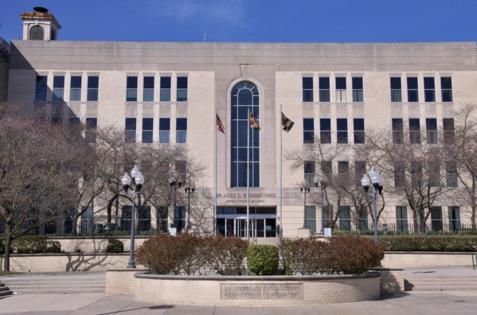Why are thousands of Baltimore students missing more than 60 days of school?
Published in News & Features
BALTIMORE — Kids missing school is a longstanding problem in Baltimore. But new data obtained by The Baltimore Sun and FOX45 shows absenteeism in city schools is more dire than previously known — with thousands of students missing a third, half, or majority of the school year.
Data shows around 11% of Baltimore City school students — more than 8,000 out of 75,000 students — missed 60 or more days of school in the 2022-2023 school year. Around 3,500 of those students were gone 90 days or more, which is half the school year. Around 1,500 students were absent 120 days or more.
Even missing 18 days of school — the definition of “chronic absenteeism” according to the Maryland State Department of Education — can damage a student academically, not to mention 60 days. Nearly half of Baltimore City school students were chronically absent in 2023. The approximately 49% of students who were absent that year was a slight improvement from 54% the prior year.
“If a student is not in school, they are definitely going to fall behind in their work, and it’s really going to hurt their ability to succeed in class because they’re missing instructional time,” said Stacy Place Tosé, chief of Baltimore City Public Schools.
Previous reporting shows most city school students who miss more than 60 days of school are still promoted to the next grade.
The Sun and FOX45 obtained the new data through a lawsuit against city schools that came to a settlement earlier this week. The lawsuit was filed by Jovani Patterson, a former City Council candidate and parent of a former Baltimore public school student. The litigation was financially supported by David Smith, co-owner of The Sun and executive chairman of Sinclair Broadcast Group, the parent company of FOX45.
The new data showing not just chronic but “extreme” absenteeism is distressing, said Robert Balfanz, head of the Everyone Graduates Center and a professor at the Johns Hopkins University School of Education. At the same time, he said the data isn’t necessarily surprising, given that the nationwide rate of chronic absenteeism doubled during the COVID-19 pandemic.
Why is absenteeism so high?
In the 2022-2023 school year, there were 8,364 students absent 60 or more days. The numbers were even worse the prior year, when 10,478 students missed at least 60 days.
Aside from the effects of the pandemic, the causes of absenteeism are manifold, Tosé said. Sometimes students have trouble getting transportation. Some have family-related issues, like caring for their younger siblings, parents or grandparents. Others have chronic illnesses, doctor’s appointments or grapple with “community factors” that make them feel unsafe coming to school.
Some kids have to care for their own kids — even in middle school, said Chris Schulze, a former Beechfield Elementary/Middle school teacher in Southwest Baltimore. Other times, it’s a question of whether the student wants to go to school.
“For a lot of them, they didn’t see the value in education because it hadn’t really done much for them or their family in the past,” Schulze said. “So there was just a choice, ‘Hey, I don’t want to be spending my time here.’”
Poverty is a key factor, said Carl Felton, a policy analyst with EdTrust and a former Baltimore City Public Schools employee. Around half of the city’s students are considered low-income, and children in poverty are two to three times more likely to be chronically absent than other students, he said.
Asked about the more extreme cases of absenteeism, Tosé said the school system is focused on “every child” who is absent. But the more extreme cases prompt even deeper questions about why students can’t get to school, she said.
“I don’t think anyone wakes up and says, ‘My child is not going to go to school today,’” she said. “And we’ve been really trying to unpack why the students are not coming to the school. Like, what is the root?”
Meanwhile, the question of who to hold accountable for high rates of absenteeism isn’t an easy question to answer.
“The blame question is a dicey one,” said Nat Malkus, who researches national trends in chronic absenteeism as deputy director of education policy for the American Enterprise Institute. “What’s more important is determining who needs to take responsibility for turning this trend around. I think the districts have a clear role to play, but they can’t do it alone, and if behaviors on the part of families are keeping students home… then we’re going to need to get families to be part of the solution.”
What is the school system doing to reduce absenteeism?
Every school has an “attendance team” tasked with reviewing attendance numbers and finding ways to help children get to school, Tosé said.
At the district level, there are “attendance pop-up shops” and an Office of Student Conduct and Attendance, which includes a director and coordinator to support individual schools, she said.
“Attendance is everybody’s business in the school district,” Tosé said.
The school district sends out a robocall daily for students who are absent, followed by a call from the school attendance monitor. If students are absent for an extended amount of time, there will be letters, emails and requests for parent conferences, Tosé said.
Students who can’t attend school physically have a virtual option, she said. For others who have to work during the day, they can attend night school in person.
There also are school employees who help students if they have to move to a new school, in addition to vendors that conduct home visits to determine why students are absent.
“Sometimes it may be like a vacant house, or no one’s there anymore,” Tosé said. If a child can be located, the school continues to encourage them to come to school. If not, the child is dis-enrolled, she said.
Mayor Brandon Scott, in an emailed statement to The Sun, noted his “Attendance Challenge,” which involves periodically highlighting schools that have improved their attendance numbers.
“While we’re still dealing with many of the impacts of the COVID-19 pandemic, schools across the district are improving their attendance by building attendance teams that provide case management and conducting daily outreach to students struggling with absenteeism,” he said. “The work to get all our young people in school every day continues — which is on all of us, not just principals and teachers, but parents, caregivers, neighbors, and students.”
Tough love or timely intervention?
Should students be passed to the next grade if they’re chronically absent from school and not academically ready to progress?
On one hand, promoting them means it will be difficult for them to catch up academically. On the other hand, repeating a grade may not help much if they continue to be absent from school or don’t receive additional learning assistance, experts told The Sun.
According to new data obtained by The Sun and FOX45, the majority of city school students who are absent from school for more than 60 days are passed to the next grade. The data shows that 62% of all students who missed 60 days or more in the 2022-2023 school year were able to pass to the next grade, in addition to 39% of kids who missed at least 90 days of school and 24% of kids who missed 120 days of school.
When excluding high school students, who must earn a certain number of credits to graduate, the data shows upwards of 95% of pre-K, middle and elementary school students were passed to the next grade, despite missing 60, 90, or 120 days or more of school.
Absences do not factor into the city’s grading policy, Tosé said. The school system’s practice has been that children are retained no more than once in their elementary school years, and no more than once in their middle school years, and that a student receives additional support if they are retained.
“We are not going to retain a kid three times in the third grade. That’s not beneficial to the child,” Tosé said.
Much research on retention shows that it doesn’t work, said Kalman Hettleman, a former member of the Baltimore City school board and the Maryland Commission on Innovation and Excellence in Education.
“Kids tend to get the same thing for a second year,” he said. “You can’t have a kid who’s 14 years old and has a beard sitting in second grade.”
He noted that social promotion also isn’t popular.
“No one thinks retention is a good thing. No one thinks social promotion is a good thing,” he said. The only thing that works is “timely interventions,” like tutoring for students who are struggling with reading and math, he said.
Retaining students was recently debated at the state level. Some members of the Maryland State Board of Education took issue with a proposal to retain students in third grade if they weren’t able to read at grade level. A revised version of the proposal recently passed and allows parents to waive retention for their students.
While some believe retaining students will help them take school more seriously, others say a “tough love” approach only works for a fraction of kids, said Balfanz, the Johns Hopkins professor.
“You would probably see a little improvement, but you wouldn’t fundamentally change the dynamic,” he said.
Some absent students do make up their schoolwork
Some high schoolers are able to make up school credits, despite being absent most of the year, according to an affidavit from Chief Achievement and Accountability Officer Theresa Jones in the recently settled lawsuit against city schools.
Out of 160 high school students who were promoted despite missing at least 120 days of the 2022-2023 school year, at least 99 of those students earned credits through one of the school’s credit recovery programs, Jones said. That includes after-school programs, Saturday school and summer school.
Jones also noted that some of the high school students who passed their grades despite a high rate of absenteeism have Individual Education Plans due to a disability, are absent due to “high mobility” resulting from homelessness or state-supervised care, are pregnant or parenting, or are hospitalized or receiving treatment for a significant illness.
“City Schools’ significant, resource-intensive, and often costly efforts to serve the unique circumstances of some of our highest needs student populations are mandated by federal and state law, rather than evidence of any illegal action,” Jones wrote in the affidavit.
Out of all high schoolers who missed 120 days in the 2022-2023 school year, the 160 students who passed were few, compared with the 1,185 who failed.
Truancy court: the school system’s last resort
In some cases, chronic absenteeism is remedied through truancy court, which Tosé described as a “last resort.”
Last year, the school system received over 1,000 referrals for truancy court. But not all referrals end up going to court, Tosé said. First, the school tries various ways of increasing the student’s attendance. But if the family is not responsive and attendance doesn’t improve, the case is sent to the State’s Attorney’s office.
Tosé said the school system is working to “reimagine” truancy court as a place that supports families.
“We don’t want it to be punitive, because, again, we want people to come to school,” Tosé said. “We want them to feel good about coming to school, and we want them to have a positive experience.”
--------
©2024 The Baltimore Sun. Visit at baltimoresun.com. Distributed by Tribune Content Agency, LLC.







Comments